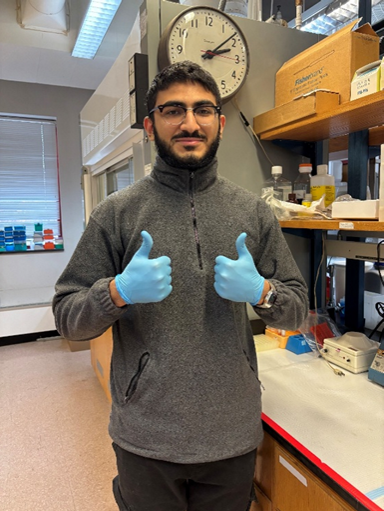Chloe Matuszewicz, Verrazzano Class of
2025, completed major in Business Management
 Social
media platforms such as Instagram, Facebook, TikTok, and Twitter have
fundamentally altered how individuals, organizations, and communities connect
and share information. My research aimed to explore the role of social media as
a disruptive innovation and its impact on communication, education, business,
and society.
Social
media platforms such as Instagram, Facebook, TikTok, and Twitter have
fundamentally altered how individuals, organizations, and communities connect
and share information. My research aimed to explore the role of social media as
a disruptive innovation and its impact on communication, education, business,
and society.
Social
media has improved international communication, encouraged activism, and opened
up new avenues for education and promotion, but it also has drawbacks,
including false information, privacy issues, overabundance of content, and the
decline of authenticity. Through qualitative research, this study aimed to
investigate the advantages and disadvantages of these developments, providing
stakeholders such as governments, corporations, and non-governmental
organizations (NGOs) with guidance on how to deal with the opportunities and
difficulties presented by social media.
The
results demonstrate social media's dual character as a force that needs careful
management to prevent detrimental effects on society and as a tool for
innovation and advancement. Understanding how ingrained social media has become
in daily life gave rise to the concept for this study. Its capacity to disrupt
established systems like marketing, communication, and education stood out as a
field that deserved more investigation.
I
was driven by the urge to gain a deeper understanding of this two-pronged tool
and to pinpoint tactics that companies, academic institutions, and legislators
may employ to maximize its advantages while reducing its drawbacks. The
frameworks of Clayton Christensen's Disruptive Innovation process and Everett Rogers'
theory Diffusion of Innovation offered a theoretical perspective for analyzing
how social media alters society dynamics.
Initially,
I expected the research process to be relatively straightforward—a compilation
of existing literature, followed by a clear synthesis of ideas. However, it
turned out to be a far more intricate and demanding journey. Due to its
wide-ranging and complex effects, social media demands an intricate equilibrium
between examining its advantages and resolving its drawbacks. To draw useful
findings, every area impacted by social media, including communication,
education, and entertainment, needed to be investigated comprehensively. I
didn't realize how much more critical thinking and further research this project
would demand, and careful analysis of sources.
One
of the primary challenges was working within time constraints, which limited the
ability to conduct primary research. Secondary data collection and analysis
became crucial, but thorough filtering was also necessary to make sure the
sources were reliable and relevant. It proved to be a balancing act to focus on
specific elements without simplifying them, considering the wide range of
social media's influence. However, it was comparatively simple to obtain
secondary data and identify reoccurring patterns due to the amount of
literature on social networking as a disruptive innovation.
Theoretical
frameworks, like Christensen's work on disruptive innovation, offered an
organized method for examining how social media is changing different
industries. The magnitude and range of social media's effect shocked me the
most. I learned how profoundly it has changed not just how people communicate
with one another, but also how society, business, and even educational systems
are shaped. Social media's dual nature—its ability to promote constructive
social change while also presenting serious risks, was especially noticeable. Social
media encourages superficial participation and spreads false information even
as it gives users the ability to take part in international discussions and
movements.
This
study experience has been enlightening and life-changing. It underlined how
crucial flexibility and critical thinking are when tackling a complicated,
quickly changing topic like social media. I discovered the importance of
combining many points of view and striking a balance between theoretical
understanding and real-world applications. Above all, this study reaffirmed how
crucial it is that stakeholders use social media with consideration. For
example, companies must adopt strategies that strike a balance between
short-term aims, like more sales, and long-term ones, like fostering trust and
brand loyalty.
To
promote a better online environment, governments and politicians must
concentrate on enhancing digital literacy and preventing false information.
Nonprofits can utilize social media to spread their message, but they also need
to be aware of the dangers of false information and content overload. Overall,
this study has helped me better grasp how social media is changing how society
interacts, learns, and functions.





